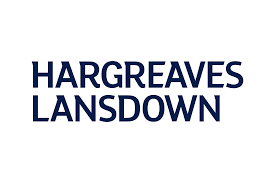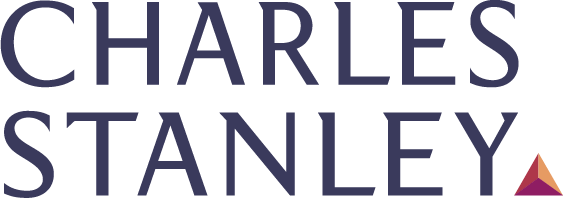Pension drawdown is about living in the present while investing in the future. This might be the best of both worlds when it comes to making the most of a pension pot, but it can be a challenge to get the balance right.
Maximise your retirement fund with our panel of pension providers. Click on your chosen provider to get started!
What is pension drawdown?
A flexible retirement income provides retirees with the option to take up to 25% tax-free from their personal pension and then invest the rest. The tax-free amount can be taken as a lump sum or gradually in smaller amounts. The lion’s share of a pension fund remains invested, from which it is possible to choose a regular taxable income or dip into the pot as and when needed.
Pension drawdown is available to those with personal pensions and defined contribution pensions.
It’s important to remember that the value of any investment can fluctuate, and charges are applied to most investments.
What are the alternatives to pension drawdown?
The main alternative to pension drawdown is an annuity. This is a financial product you can purchase with your pension that provides a regular income for life, however long or short, or for a fixed number of years. However, it’s not usually possible to leave any remaining money left over to your heirs.
With an annuity or any other alternative to drawdown, retirees are still entitled to enjoy the benefit of a tax-free lump sum, up to 25%, at age 55 (57 from 2028).
Annuities provide a guaranteed regular income, and there are many different kinds to suit all circumstances. As with any major decision about pensions and finance, it’s crucial to get professional financial advice from someone who understands current rates, regulations, and options.
When there is a rise in interest rates, annuities become more popular.
Spend it today?
One option is to walk away with your whole pension in cash, spend it, pay off debts, and put the rest in a savings account. If the amount accrued isn’t particularly significant, this could be the right thing to do, depending on individual circumstances and goals.
However, in the tax year that you take the money and run, you might find yourself in a higher tax bracket, paying an unexpectedly high amount of tax.
Is it a good idea to get a pension drawdown?
The most attractive aspect for many might be the flexibility to choose when and how much of a pension pot to spend. After all, circumstances change in retirement as much as they do in other phases of life. Many people continue to work, or they might choose to release money from property. At the other end of the seesaw, there is time to enjoy the holiday of a lifetime and pay for home improvements or unforeseen expenses and children to continue supporting.
By moving your pension into drawdown, you ensure that it is possible to pass on the wealth you have accumulated in your pension to those you love - your beneficiaries.
Flexi-access drawdown can be seen as a wise option for anyone who is in danger of receiving too much money in retirement. Not taking an income, or taking a smaller income, could help to avoid paying more income tax than necessary.
The biggest selling point championed by pension providers is the opportunity for growth through investing. Ideally, a pension pot magically replenishes itself after any withdrawal, but this is not guaranteed, and the reverse might happen.
What are the risks of pension drawdown?
A pension invested in drawdown is at the mercy of the stock market. Although money can be invested cautiously, there are still no guarantees that the value of your pension will increase or at least stay the same, even with the help of a qualified financial adviser. Therefore, this is not a good choice for the pessimistic.
The biggest risk is that your money could run out entirely. Why might that happen? First of all, taking the 25% tax-free as a lump sum reduces the overall amount by a quarter straight away. Secondly, it’s possible to access this money ten years before becoming eligible for the state pension.
The regulations are giving those still in middle age the opportunity to benefit early, although without growth, their pension is a finite amount. If you think of a pension in drawdown as cash in a wallet, you can still remove the notes one at a time, but when you’ve spent them all, the purse is empty unless you put them back in at the same rate.
Those fortunate enough to live longer than expected are in greater danger of running out of money. At that point, if other income is available, it's not necessarily a problem. Otherwise, your only remaining pension would be the state one - a guaranteed income but very small.
Personalities and flexible pension
Everyone has their own individual approach to managing their money, and the advantages to be gained from pension drawdown depend very much on the character of the person looking at their retirement plan and wondering what to do. For many, the freedom to decide when to make withdrawals and how much to withdraw will enhance a sense of control. For others, flexibility might really mean uncertainty and anxiety.
The freedom to take little or nothing from a pension pot during the early years of retirement will leave more for the later years, but perhaps this might lead to the over-cautious impoverishing themselves for no reason.
For a single person or couple who have been used to a fixed salary while working, the concept of a flexible income might be difficult to get used to at first. Not only that, making decisions about large sums of money and investing might prove daunting, especially when experiencing brain fog and senior moments.
Bear in mind that it’s not just HMRC that might take an interest in your nest egg - any capital in a pension or income received from it will be considered by the council when they assess contributions to social care. If this is an imminent concern, or you want to plan in advance for all eventualities, consult a SOLLA-accredited financial advisor.
Getting independent advice about retirement income
It can be tricky to find a path through the maze of facts, advertising and scams since pension freedoms were introduced in 2015.
Before consulting an independent financial adviser, there is plenty of free advice available. Reliable general information can help to give an overview, but with a flexible option involving different personal circumstances, it’s best to get tailored guidance. Pension Wise from the government-backed service Money Helper offers a free consultation to anyone over 50 with a defined contribution pension pot to spend and protect.
Reputable drawdown pension providers should be able to offer information without obligation and must inform investors of the risks. For example, in their guide to drawdown, Hargreaves-Lansdown suggests that retirees make sure they have enough money to cover essential costs through other means before even applying for drawdown.
Before choosing a flexible retirement income
Pause and take stock before plunging into drawdown.
- Citizens Advice warns that income drawdown is only feasible with a six-figure pension fund or plenty of other income from different sources.
- Pension income and pension savings can be spread around more than one type of financial product or account.
- Pension drawdown is simply not an option for everyone. Not all workplace pensions are eligible for drawdown. Those that aren’t, such as defined benefit pensions, do provide a regular income for the duration of retirement.
To get an idea of the figures, it's a good idea to run the numbers through a drawdown calculator.
Legal and General’s drawdown calculator first calculates how much tax-free cash you can claim on the amount you have in an individual pension pot (or more than one combined). Next, it shows when you will run out of money or how much you’ll have left, depending on the amount you withdraw annually. Finally, it compares the outcome with an annual guaranteed income that would be obtainable with an annuity.
We Are Just offers a drawdown risk calculator showing a percentage risk of running out of money.
Pension drawdown providers
Not all pension providers offer a drawdown option, and there will be differences among those that do. If you’re unsure, you shouldn’t have to move all of your funds in at once. Once set up, you can choose whether to withdraw a regular set amount or different amounts sporadically - whilst keeping an eye on the tax that will be deducted.
When choosing how to invest, your provider should guide you through a range of investment pathways to suit your situation and preferences, but ultimately your money is at the mercy of your own choices. With freedom comes responsibility, and pension drawdown providers cannot guarantee you won’t lose out.
Take a SIPP
If being in the financial driving seat appeals, a SIPP (self-invested personal pension) could be the right road. SIPPS offer a wider range of investment opportunities with different objectives and levels of risk. SIPPS attract tax relief (within the parameters of the Money Purchase Annual Allowance), and the contributions can be flexible. Perhaps an ideal approach for the self-employed.
Flexible retirement income is not the only way to take income from a SIPP. After a working life of variable income, a regular fixed amount for the rest of your life might seem rather appealing.
Managing a treasure trove in drawdown
When growing a large pension pot and preparing to place it with a provider, the extra cost of consulting an independent financial advisor could well pay off. Pension drawdown works differently according to each family's priorities, and larger drawdown funds will need more careful planning around current tax rules for those who might accidentally become higher-rate taxpayers.
Sizable pension pots may incur extra tax by exceeding the lifetime allowance (£1,073,100 in 2023), as would yearly contributions over the Money Purchase Annual Allowance (MPAA). Furthermore, HMRC may initially apply emergency tax to large pension withdrawals, which could be categorised in a high tax band even when a tax code has been applied.
Capped drawdown
Drawdown rules used to include capped drawdown, which put a limit on the amount of pension money anyone could withdraw each year. Now, there is no limit to the amount you can take out in any one year. Some drawdown plans established before the cap was abolished can still use capped drawdown, but this is not available for anyone taking out a plan now.
There is no reason why we can't set our own cap on how much we withdraw. A drawdown calculator can help work out what the upper limit should be.
A self-imposed capped drawdown might make it more difficult to give in to temptation or to pressure from family to spend. However, with the ability to access your funds if required, you can be ready with the cash in an emergency. It's your money, after all.
Pension drawdown rules
Mostly, a pension scheme designed to offer the greatest amount of freedom has very few rules. It’s more the lack of rules that could cause concern. Pension providers are regulated by the Financial Conduct Authority, but in order to make the most of drawdown, we are required to regulate how we access it and must accept risk.
If something goes wrong with a pension, no one wants to feel like it's their own fault, so it’s worth exploring all the choices available. At this point, it’s allowable to take some or all of the funds out of your pension and choose a guaranteed income for life or any other alternative arrangement.
Pension drawdown - a change of direction
Even if flexible drawdown is the right path for retirement to begin with, when the financial landscape changes, it may not be right for new personal circumstances.
Government changes to pensions and tax, in addition to fluctuations in the market and interest rates, will always mean it’s wise to keep up to date and review any financial arrangements - particularly those designed to support us when we‘ve earned the chance to relax.
Image Credit: Mark Timberlake at Unsplash







